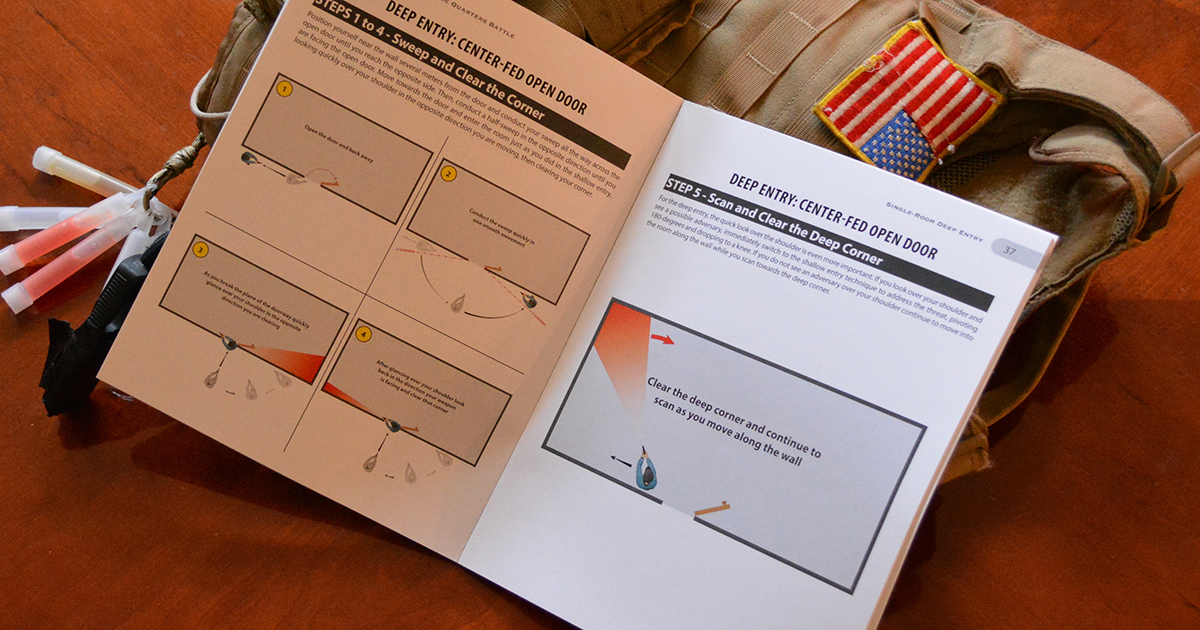PRODUCT: Two-Person Close Quarters Tactics
After publication of the Single-Person Close Quarters Battle manual, a large number of readers requested more information on two-person tactics. Given the rising frequency of deadly attacks and terrorist incidents, it is not unlikely that armed citizens and security professionals will find themselves in situations where they need to defend themselves with the help of a partner. This book focuses on deliberate, defensive tactics designed to increase your chances of survival in a deadly attack.
PRODUCT: Law Enforcement CQB Shipping Now
The Law Enforcement CQB Manual is now ready to ship. The manual provides a wide selection of common sense concepts and tactical options, designed to help law enforcement officers develop their own mission-specific tactics, techniques and procedures to increase survivability and effectiveness. The manual is intended to be useful to all law enforcement personnel from the lone patrol officer who faces threats every day on the street, to the tactical teams that serve high-risk warrants and respond to hostage situations.
DEBATE 4: Limited Penetration vs. Points of Domination
In preparation for the release of our new Law Enforcement Close Quarters Battle manual, this debate compares the traditional points of domination room entry technique with the newer limited penetration techniques. This debate is important to the new manual, since the manual takes a balanced approach that is designed to be flexible enough to be useful for any department and modified to fit existing tactical preferences and SOPs. Limited penetration techniques call for the tactical team to clear a room and engage targets while standing in the doorway or remaining very close to the door, without penetrating deeper into the room. The points of domination technique calls for the tactical team to rapidly penetrate deep into a room and assume points of domination with interlocking fields of fire.
PRODUCT: Hard Copy of Single Person CQB Manual Now Available
The hard copy (paperback) version of the Single-Person Close Quarters Battle Manual is now available. The manual is the same size as a standard magazine (8.5 x 11) in order to make the illustrations and diagrams easy to see. The manual is for sale online at the Special Tactics Pro Shop.
DEBATE 3: The Best Way to "Slice the Pie"
The tactical concept of “slicing the pie” has been around for many years and is known by several names including “threshold evaluation,” and “angled clearing.” Special Tactics advocates a slightly different approach to its execution than what is taught by some other tactical schools. The key difference is speed. While some schools advocate executing the movement very slowly, Special Tactics suggests moving as quickly as possible while maintaining some degree of weapon accuracy.
Single-Person Close Quarters Battle
The scenario of a single Soldier or SWAT officer having to operate alone is relatively unlikely and often receives little attention. However, for ordinary citizens or for police officers responding to an emergency call, the chances of having to operate alone are quite likely, yet there are almost no tactical references (books, videos or classes) that provide useful information on the subject of single-person tactics. Special Tactics has just published a digital manual to help fill the dangerous capability and knowledge gap in the area of single-person tactics.
DEBATE 2: Close Stack vs. Dispersed Stack
This debate compares two different ways to stack on a door while conducting urban operations. While these techniques each have several names, we will refer to them as the “close stack” and the “dispersed stack.” For security reasons, keep the discussion at the conceptual level and use general terms.
DEBATE 1: Low-Ready vs. High-Ready
This is the first of many debates that will be hosted by Special Tactics. Debate topics will cover everything from individual skills to battalion-sized combined arms operations. This first debate compares the “low-ready” weapon carry technique to the “high-ready” weapon carry technique.








